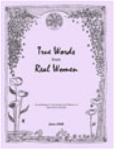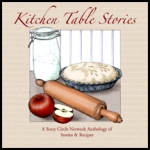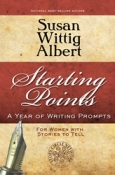I’m posting a brief series about editing and copyediting. Here’s Part 3– important lessons learned from long experience in editing my own work and the work of others. Here are seven things you can do to clean up your manuscript before you send it to a reader (a friend, beta reader, agent, copyeditor, or editor).
- Put your darling on the shelf. When your project is finished, go on to something else. Give your work time to cool off and yourself time to put some distance between you and that precious thing you’ve written. When you come back to it, return as a stranger, with analytic eyes.
- Print and read (or read from your Word file). Seeing your work on paper and hearing it read may clue you to problems, glitches, and stylistic infelicities. Print and read aloud, making pencil changes to your text. Or read aloud from your Word file, making changes as you do. Another option: send your Word document to your Amazon Kindle account, and read it on another device. I sometimes read a Kindle copy on my iPad, marking the changes I want to make.
- Search and destroy those personal gremlins. Every writer has her own personal gremlins (words like affect/effect, less/fewer, your/you’re). Know what yours are, so you can be on the alert for them.
- Repetition repetition repetition. Readers notice careless repetitions of words and phrases. You should notice them first (and reject, revise, replace) before you submit your work. My copyeditors use the phrase “close repetition” to remind me of too many raised eyebrows, frowns, nods, sighs, and so on. I try to catch these before a file leaves my computer.
- Present a professional appearance. You don’t wear shorts to a job interview; you make sure you’re appropriately dressed and your hair is combed. (Makeup optional.) Conforming to “industry standards” makes your work look professional. Here are the basics:
- Send your manuscript as a Word document (.doc or .docx).
- Align the text to the left, ragged (don’t justify).
- Double space in Times New Roman black 12-point font.
- Single space after periods.
- Use page breaks between chapters. Start chapters a third of the way down the page.
- Use #s to indicate scene breaks: insert a space above and below.
- Number the pages. Center bottom is fine.
- Check for chapter breaks. I reduce my file image to about 50% or 60% and click rapidly through the pages. This gives me a quick overview of the file and I’m able to see missing breaks.
- Run spell check. Yes, I know—Word checks spelling as we type. But another spell check won’t hurt. You might not accept the changes, but you may catch some errors before they get to your editor or reader.
- Puzzled? If you have a question about usage, grammar, or formatting issues, check with an industry-standard style manual, such as the Chicago Manual of Style. I subscribe to the online edition (currently $35 a year), and I use it when I’m writing. When my copyeditor returns a file, she frequently notes problems by referring to the CMOS. The print edition is also available, but the online edition allows you to make notes, create your own references, and search.
I’m expecting The General’s Women back from my copyeditor in the next few weeks. When that arrives, I’ll share some thoughts on that process. Watch this space.
Reading note. Editing is the very edge of your knowledge forced to grow–a test you can’t cheat on.–S. Kelley Harrell








